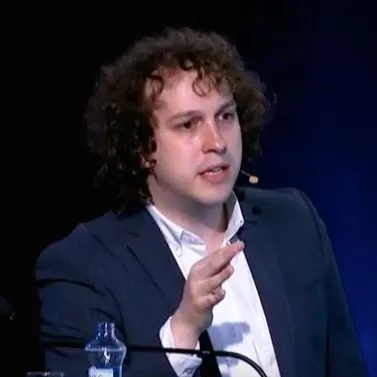
Circular economy
7 minute read
6 tips on how your company can become more circular
As consumers become more demanding about the products they use, circularity is increasingly a prerequisite for sustainability – and ultimately for commercial success.
But making the shift towards the circular economy isn’t easy. Often the highest barrier standing in the way is high start-up costs, though there are other hurdles to overcome.Nonetheless, in the end, it pays off to enter the circular economy – largely because it simply makes sense to reuse materials and products.Here are six tips on how to inject some circularity into your business.
1. Rethink your feedstock
Fossil-based carbon is likely to remain the main feedstock for some time into the future because it’s cheap – even with punitive taxes and green policies, says Michael Carus of German independent research institute nova-Institut.“
The easiest way is to make a hole in the soil and get oil from it,” says Carus, one of the leading experts in Europe on the industrial material use of renewable carbon. “You can’t make a system so simple as crude oil extraction.”But what you can do is make sure that carbon becomes circular by keeping any carbon in the cycle as long as possible, eking out every last use of them.
That means making bold decisions around product design beyond simply the materials you elect to use, but also how you design them.Plastics are likely to be around for the foreseeable future, so think about moving away from single-use ones to multiple-use plastic products. Where possible prolong the life of carbons, or make it easy to recycle them back into the supply chain.
2. Consider drop-in solutions and break down barriers
There are often fears that companies must make wholesale changes to become more circular or run the risk of being left behind.Such black and white thinking can quickly introduce a sense of paralysis, as firms worry that they have to overhaul entire systems to become circular.
However, that need not be the case.
One drop-in solution is called Neste RE, which is produced of 100% renewable and recycled raw material and helps replace virgin feedstock in the production of plastics and chemicals.
Neste has worked with several companies to test out its drop-in solutions, which can be used on their own or in a blend with fossil feedstock.
It all boils down to a small change in process that doesn’t require a wholesale rethink but does improve the circularity of a manufacturing process.Last year, for example, Neste partnered with Jokey, a manufacturer of rigid packaging and food packets, and offered to switch out one element of the manufacturing process to make it more circular.
“The beauty of drop-in solutions is that they are easy to use,” says Lars Börger, Vice President of Brand Owner Management, Renewable Polymers and Chemicals (RPC) at Neste. “You can just test it out without big investments like building a new plant or developing a new technology.”
Too often companies come up with a long list of excuses not to do something, often starting with the price.
“Start small,” says Börger. “Once you have the value proposition in place, you can go big.”
3. Question your beliefs
Go into a takeaway food outlet or pick up a bite to eat anywhere and you’ll likely be given a wooden fork with your meal. It makes sense intuitively: we know that plastic is bad for the environment, and that renewable, natural alternatives are better.But are they?
“If you look at the lifecycle assessment, it’s not a good solution,” says nova-Institut’s Michael Carus. “This is the dead end of the product.” Used wooden forks don’t go back into production, because of hygiene concerns. Instead, they’re incinerated.It’s an example of where accepted wisdom of the crowds leads us down a path that is actually less eco-friendly, even when we’re trying to be more so.
Plastic forks can be melted down to be reused; they can be safely cleaned and returned into circulation; or they can be collected and a new product made from them.That’s before you get into the production of them: wooden forks require carefully whittling down wood to the right shape, with plenty of waste – while plastic can be molded to shape with minimal loss.“
We have to avoid those mistakes and really look at the lifecycle assessment and compare solutions,” says Carus.
To become more circular, question accepted wisdom, and don’t assume just because a solution is trendy that it’s the best one.“It’s not about the feeling of the people saying: ‘This seems to be a better solution,’” he says.
That is to say, you have to test it.
4. Shift attitudes
“For decades, the plastic products and polymer industry has been handling and negotiating with all parties involved in a commodity manner,” says Jeroen Verhoeven, Vice President of Production Partner Management, RPC at Neste. “You can’t make sustainability work by adding a green certificate and sticking to the old behaviour.”
Verhoeven calls for a more holistic approach to plastics and chemicals and a closer cooperation between companies in the field.
“That means all of a sudden, the same plastic or chemical products that were commodities in the past become more strategic items that require much more of a collaborative approach.”
It requires adopting an attitude and values of the type Neste has.“I think putting sustainable values in the core of our business is what enabled Neste to manage its own transformation,” says Verhoeven.
5. Be technology agnostic and think holistically
”The technology for chemical recycling is not yet at the level where it could be or should be,” says Neste’s Lars Börger.
Neste is driving that forward with its development of chemical recycling. The way they do that is by being open to new ideas.“You need to be technology agnostic,” says Börger. “There’s a tendency to say: ‘We’ll do no chemical recycling,’ and to see it as an enemy of something else. But you need to look at this holistically: the details are important. Can your side streams be used elsewhere?”
Neste carefully considers what waste products can be reused and how they can be utilized for other methods and products.
“We make waste products more valuable, and that makes it fly – because it needs to be commercially working,” says Börger.
6. Pick your partner wisely
The process of making businesses circular isn’t a simple one and can be a long slog.So, it’s important you ensure you have all the support possible on that journey. “The way we approached it four years ago was that it’s quite important to select the right partner,” says Neste’s Börger.
Neste first sits down with a potential partner and discusses what it is they want to achieve – “do we have the same language?” asks Börger.
In an effort to facilitate the global transformation towards the circular economy, Neste has partnered with companies such as Unilever and LG Chem, South Korea’s largest diversified petrochemicals company.
Partners are crucial, agrees Michael Carus from nova-Institut, because change cannot be enacted by one company alone. “We need cooperation and standards in finding intelligent systems in cooperation between the plastic industry and chemical industry, waste collectors and the consumer,” he explains.
It’s no good every company switching out single-use cardboard pizza boxes for a reusable plastic alternative if every pizza restaurant has a different system, each of which clogs up the traditional recycling routes.
As the old saying goes: A problem shared is a problem solved. And this problem is one we all need to share. “The paradigm shift in behaviour along the value chain is imperative to make sustainability work,” says Neste’s Jeroen Verhoeven.
“We need to have a shared understanding that we can’t decarbonize chemistry,” says Börger, “but we can change the carbon sources for chemistry.”
“We can’t only sit and wait for future technologies to come to fruition but rather switch to fossil free alternatives now. The good news is that we have the solutions at hand."
Credits:
Chris Stokel-Walker, author, speaker and journalist whose work has appeared in BBC News, The New York Times and WIRED UK.





